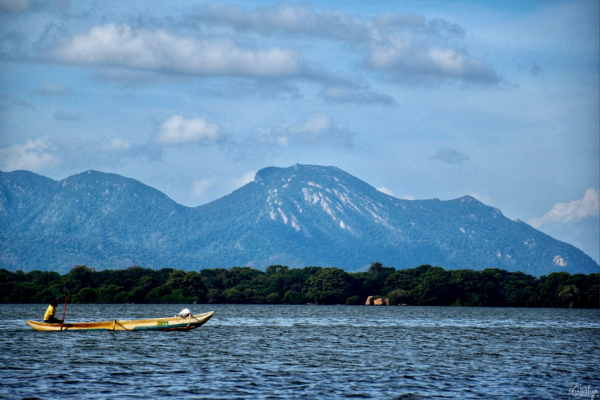Exploring the Mysteries of Kala Wewa: Sri Lanka’s Ancient Reservoir – By Bhanuka – eLanka

Nestled amidst the picturesque landscapes of Sri Lanka lies a testament to ancient engineering brilliance and the enduring legacy of hydraulic civilization: Kala Wewa. This monumental reservoir, dating back over two millennia, stands as a silent witness to the ingenuity and resourcefulness of the island’s early inhabitants. Let’s embark on a journey through time to unravel the mysteries of Kala Wewa.
Origins and Construction
Kala Wewa, meaning “Black Reservoir” in Sinhalese, was built during the reign of King Dhatusena (4th century AD) in the ancient capital of Anuradhapura. Its construction was a marvel of ancient engineering, aimed at harnessing the seasonal rains to support agriculture in the region. The reservoir was part of a sophisticated irrigation network that included an extensive system of canals and smaller tanks, ensuring the efficient distribution of water to farmlands across the region.
The sheer scale of Kala Wewa is awe-inspiring. With a capacity of over 123 million cubic meters, it ranks among the largest ancient reservoirs in Sri Lanka. Its embankment stretches over 3.2 kilometers, and at its highest point, it towers nearly 12 meters above the surrounding terrain. Such monumental dimensions underscore the significance of water management in ancient Sri Lankan society and the importance of Kala Wewa as a lifeline for agricultural prosperity.
Engineering Feats and Innovations
What makes Kala Wewa truly remarkable is not just its size but also the engineering techniques employed in its construction. The reservoir’s embankment, composed of compacted earth and stone, showcases the advanced knowledge of hydraulic engineering possessed by ancient Sri Lankan civilizations. Moreover, the reservoir’s design incorporates sophisticated spillways and sluice gates to regulate water levels and prevent flooding during the monsoon season.
One of the most striking features of Kala Wewa is the “Biso Kotuwa,” or the “Queen’s Bathing Pavilion.” This stone-built structure, situated on a small island within the reservoir, served as a ceremonial bathing site for royalty. Its intricate design, with stepped terraces leading down to the water, exemplifies the architectural finesse of the era and provides insights into the social and cultural practices of ancient Sri Lankan society.
Cultural and Historical Significance
Beyond its utilitarian function, Kala Wewa holds profound cultural and historical significance for the people of Sri Lanka. It stands as a tangible symbol of the island’s rich heritage and the enduring legacy of its ancient civilizations. The reservoir, surrounded by lush vegetation and teeming with birdlife, also serves as a tranquil retreat for visitors seeking solace amidst the hustle and bustle of modern life.
Moreover, Kala Wewa remains a focal point for religious ceremonies and cultural festivals, reflecting its continued relevance in contemporary Sri Lankan society. Local communities pay homage to the reservoir through rituals and offerings, reaffirming the deep spiritual connection between the land, water, and people.
Preservation and Conservation Efforts
In recent years, concerted efforts have been made to preserve and protect Kala Wewa and its surrounding environment. Conservation initiatives aim to safeguard the reservoir’s ecological integrity while promoting sustainable tourism and community development in the region. By raising awareness about the historical significance of Kala Wewa and its role in shaping Sri Lanka’s cultural landscape, these efforts seek to ensure that future generations can continue to marvel at this ancient marvel.
Conclusion
In conclusion, Kala Wewa stands as a testament to the ingenuity, craftsmanship, and resilience of Sri Lanka’s ancient civilizations. As we reflect on its monumental embankments, intricate engineering, and cultural significance, we gain a deeper appreciation for the interconnectedness of humanity and the natural world. In preserving the legacy of Kala Wewa, we honor not only the achievements of the past but also the enduring spirit of innovation and stewardship that will guide us into the future.







